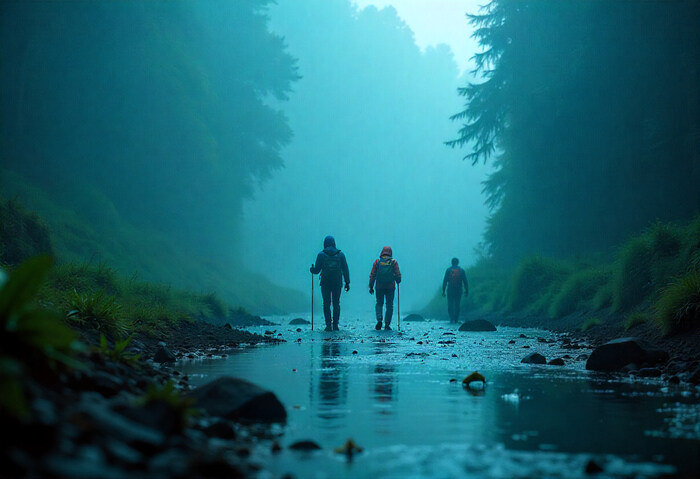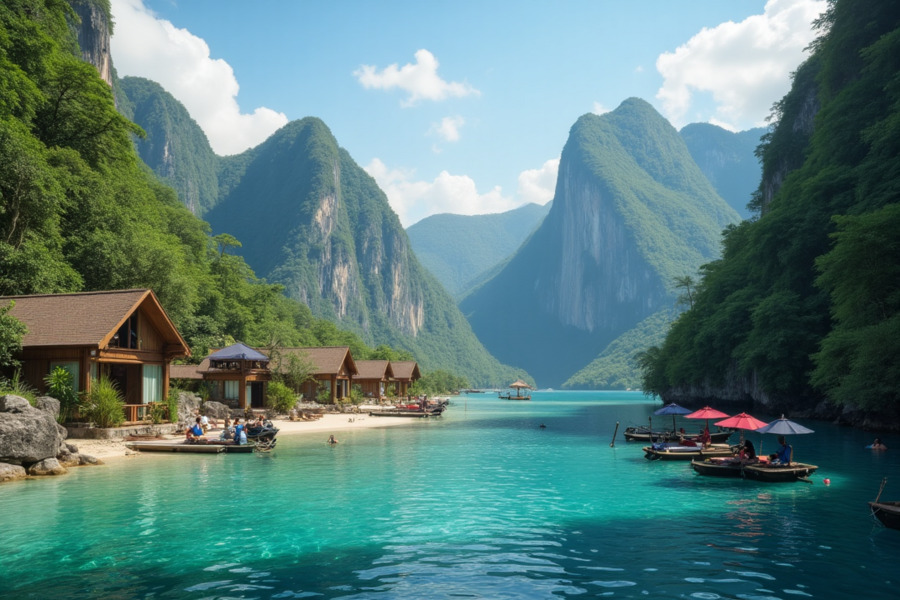≡-Shuklaphanta National Park Faces Major Tourism Challenges in Nepal Due to Underdeveloped Infrastructure and Lack of Focus on Its Natural and Cultural Richness – Viral of Today
<> Viral of Today <>
Home » Nepal Travel News » Shuklaphanta National Park Faces Major Tourism Challenges in Nepal Due to Underdeveloped Infrastructure and Lack of Focus on Its Natural and Cultural Richness Published on
September 4, 2025Shuklaphanta National Park, which is in the southwest of Nepal close to the Indian border, is one of the most secretive areas in Nepal. It contains an abundance of unique wildlife, unspoiled wetlands, and rich biodiversity. Nepal is still shy to feature the park, referring to it as an ‘almost natural gem’. All the necessary parameters are in the area to make it the showpiece of ecotourism in Nepal, but poor infrastructure, low exposure, and scarcity of facilities have blocked it from achieving its full potential.The Lack of Visitors is ConcerningTourism numbers have dramatically fallen in the past couple of years, and this is most evident in the Sudir National Park. Out of 4,006 visitors the park housed in the previous year, 2024-25 saw a decline of 284 to 3,722. These numbers are woefully low when compared to over 12,000 tourists in 2017-18. The Covid pandemic is a factor for sure, but even outside of that there seem to be some fundamental iss.Barrier for Growth: Critical Failure in Infrastructure ProvisionTo assist in promoting sustainability in Shuklaphanta park, noting the critical failure in infrastructural provision is non-negotiable. There lies a major deficiency in the manner with which the infrastructure is constructed and managed to the extent which it serves the visitors. This is seen within the standard of accommodation, transport means to the park, and the assortment of facilities on offer. Infrastructure also characterizes the manner with which a region is developed in access to a park, in which case the Shuklaphanta park is surrounded by infrastructure, however within the park and more developed areas there is a major deficiency. This is also evident in planned constructions in the park, specifically the watchtowers, and the manner in which the supporting facilities to the park, in this case the limbs of the trails and the bridges, all remain spaced out and non-consecutive extensions to a developed region of infrastructure.The grade of the park is below grade for the potential it has, this seen in the complete strip for visitation options, in which case the most damaging barrier for visitation and park use strikes with the absence of a consistent bridge structured over the Chaudhar river, thus there remains no access to the park along with the ability to visit on a safari year round, this borders on an embarrassment.Private Investment and Cross-Border OpportunitiesThe potential of Shuklaphanta can only be realized with private investment in eco-lodges, hotels, and transportation infrastructure, experts argue. Shuklaphanta itself has no hotels and the only town nearby, Mahendranagar, has a few basic lodges with no infrastructure to service the needs of eco travelers. Mahendranagar and the Shuklaphanta park area cannot attract longer stays because of the negative economic benefits that the region can yield from unattended eco travelers.The untapped potential of cross-border tourism Shuklaphanta has to offer is also valuable. At present, Shuklaphanta is positioned to border the Indian states of Uttarkhand and U.P. Indian tourists, because of the loose border policies and better transport network, can more easily visit Shuklaphanta. If border infrastructure has better cooperations from the two countries and the relations between the two are improved, there will be a significant influx of tourists in search of the marvelous park.Birdwatching: A Growing Niche with Global AppealOne of the growing challenges Shuklaphanta has to offer about itself is to get noticed in the competitive market. Out of the more than 460 species of birds that the park has, a great deal of them can be easily spotted which attracts many tourists. Birdwatchers would be especially pleased to learn about the recent sightings of the Lesser grey shrike, a bird that is a native of central and south Europe that is quite rare in these regions, and is just one example of the many that can be spotted.With the expanding birdwatching industry, it can also be anticipated that the reputation of Shuklaphanta will continue to deepen as a prime birding hotspot. The growing appreciation of sustainable and nature-based tourism will also be a benefit to the park. This section will also offer the park a greater influx of visitors.The Path Forward: Leveraging Nepal’s Natural AssetsShuklaphanta National Park is among the key natural assets of Nepal, yet it is still one of the most neglected park on the world tourism map. The park is also the second youngest national park in Nepal, having been established in the year 1976. The merged ecosystems of wetlands and grasslands set the park apart as a one of a kind for nature enthusiasts. However, the park’s lacking sufficient infrastructures fails to reach the set potential.There must be a joint effort from the Shuklaphanta and the private stakeholders to work on the park’s transformation into one of the prime land for tourism. Building roads and other tourist facilities will make the park accessible to a greater number of visitors. There is also a need for a stronger focus on international promotions and marketing to increase the visibility of the park on the world stage.Conclusion: Realization of Shuklaphanta’s Untapped PotentialBroadly speaking, Shuklaphanta National Park is another marvelous gift of nature that remains under-explored and under-exploited. Its flora and fauna, diverse wildlife, considerable avian wealth and the park’s magnificent terrain together interlock with its untapped potential. In order to position the Park as the leading ecotourism site in Nepal, the Park’s marketing strategies need to be refined and promoted regionally and internationally, and private sector infrastructural development and investments need to be augmented. Once Shuklaphanta meets these criteria, it would no longer remain the ignored site in the country, but would emerge as one of the major natural attractions. Shuklaphanta would then be able to offer its visitors the rare and memorable experience.
This information will surprise you!
See also
- Read until the end to discover everything.
- Important information you need to know.
- Interesting facts and helpful tips.
Conclusion
Did you enjoy the news? Keep following us daily!













